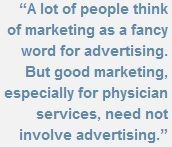- Revenue Cycle Management
- COVID-19
- Reimbursement
- Diabetes Awareness Month
- Risk Management
- Patient Retention
- Staffing
- Medical Economics® 100th Anniversary
- Coding and documentation
- Business of Endocrinology
- Telehealth
- Physicians Financial News
- Cybersecurity
- Cardiovascular Clinical Consult
- Locum Tenens, brought to you by LocumLife®
- Weight Management
- Business of Women's Health
- Practice Efficiency
- Finance and Wealth
- EHRs
- Remote Patient Monitoring
- Sponsored Webinars
- Medical Technology
- Billing and collections
- Acute Pain Management
- Exclusive Content
- Value-based Care
- Business of Pediatrics
- Concierge Medicine 2.0 by Castle Connolly Private Health Partners
- Practice Growth
- Concierge Medicine
- Business of Cardiology
- Implementing the Topcon Ocular Telehealth Platform
- Malpractice
- Influenza
- Sexual Health
- Chronic Conditions
- Technology
- Legal and Policy
- Money
- Opinion
- Vaccines
- Practice Management
- Patient Relations
- Careers
The Benefits of Marketing Your Medical Practice
Everyone likes choices, and medical care is no exception. That's why it's so important for physicians to market their medical practices.

Everyone likes choices. People choose when it comes to the products and services they purchase, and medical care is no exception. That’s why it’s so important for physicians to market their medical practices.
“For almost every treatment situation, there are lots of alternatives out there,” says Tony Cox, a professor of marketing, and faculty chair for graduate business programs in medicine at the Kelly School of Business.
But, he adds, that doesn’t necessarily mean advertising your practice.
“A lot of people think of marketing as a fancy word for advertising,” he explains. “But good marketing, especially for physician services, need not involve advertising.”
Satisfied customers
Cox says that the single biggest driver of success for any business, but especially for health-related services, is customer satisfaction. That means the satisfaction level of your current patient base, but also the satisfaction level of physicians who refer patients to you.
He cites a survey conducted by the Center for Studying Health System Change. Half of respondents said friends and family were the primary source of information they use when selecting a primary care physician. But when it came to choosing a specialist, almost 70% indicated referral by primary care physician as the number one factor. In other words, if a primary care physician refers a patient to a specialist, his or her decision on whether to continuing referring to that specialist will be, at least in part, based on feedback from the patient.
“I sometimes tell classes in teaching marketing that if you think of a restaurant, for example, the most important factor for long-term success is how happy people are from their experience,” Cox explains. “Advertising can help ignite the flame, maybe generate awareness or trial, but what’s going to sustain you is if you have happy customers who come back and who tell their friends. And I think that’s as true for a physician practice as it is for a restaurant.”
Training and trial runs

Because satisfied customers and word of mouth play such a large role in medical practice marketing, it’s particularly important to properly train staff in the art of providing patient-centered care, Cox says. However, it’s also an area often neglected by many healthcare providers.
“The doctor may have a great bedside manner, but if the person who answers the phone or takes your information prior to the exam is rude, that’s where the dissatisfaction could be in terms of people leaving a practice,” he says. “All of those points of contact are really important.”
Cox suggests physicians use their own services as a way to gauge the patient experience. Phone in to see how quickly the call is answered and how polite is the staff. He recalls a physician who did just that — making an appointment; parking where patients have to park; and even laying down on the table where a procedure would take place.
“What an eye-opener that was,” Cox says. “If you look at the totality of contact that a patient has with a healthcare provider it’s pretty small with the physician. All those other people are really important too.”
And if you plan to develop marketing communication materials, such as brochures or pamphlets for distribution to patients, Cox recommends first testing them on a smaller scale before jumping in.
“Communication materials that seem reasonable on the surface can either prove ineffective, or end up back-firing,” he explains.
Financial evaluation
Marketing expenditures need to be put to the same test as any other business expenditure or activity in which the medical practice engages, Cox says. They need to be held to a return-on-investment standard, just as any other expenditure. In other words: quantify the expense.
“The bottom line is: does it help you attract new clientele to the practice, or does it help you retain your current clientele, or both?” Cox asks, rhetorically. “Maybe a better way to put it is: what is the potential lifetime value of a really satisfied patient? And then, conversely, what’s the cost of losing a patient, or having a patient become dissatisfied?”
Cox says he’s seeing a change, where more physicians recognize the importance of medical decisions and business decisions working hand-in-hand for the betterment of the practice.
“Medicine is a business, but it’s not like every business,” he says. “It’s a business where decisions impact the bottom line, but also impact human lives, and I think the feeling is that a physician who also has business training, an MBA, may be in a better position to find that delicate balance between what’s best for the patient, and fiscally responsible for the organization.”
